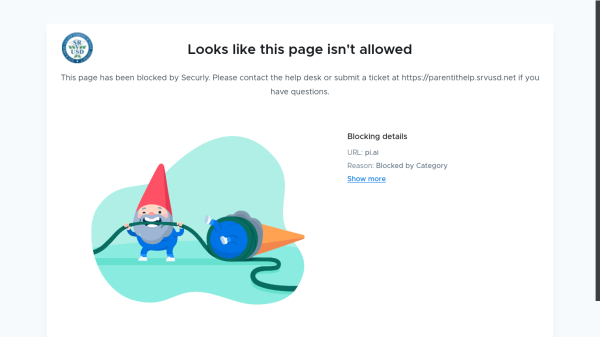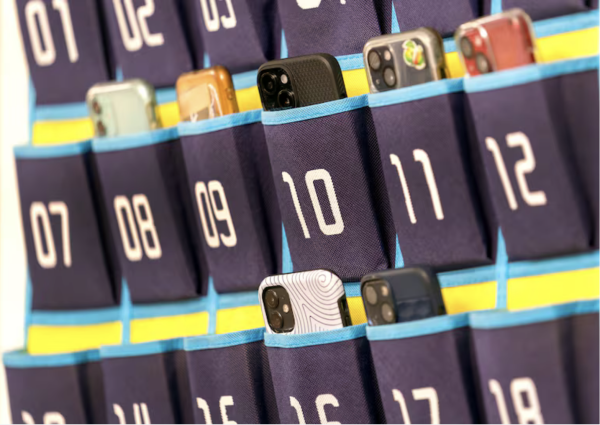SAT Goes Digital in 2024

The class of 2025 is now preparing to take the digital SAT, starting in the spring of 2024. The College Board, the organization in charge of the SAT and PSAT, have released relevant information on its website, including a FAQ.
In 2024, the SAT will be completely digital alongside other changes aimed at making it more “student-friendly,” according to the College Board, the organization behind the exam.
Beginning in the spring of 2024 in the U.S., the SAT will be taken on digital devices instead of on paper and will be shortened from three hours to two. Some questions will be adaptive and scores will be available within days rather than weeks. Internationally, the changes will arrive one year earlier in spring 2023, and the digital PSAT will be given in the fall of 2023 for all students.
“[It’s good] that it’s online and you get your results back faster, so you don’t have to worry about [it],” freshman Gaia Shi Bone said.
The SAT will be taken on laptops or tablets using a testing app. It will be more difficult to cheat than before due to the ability to give many different versions of the test. In the case of cheating, it will be easier to invalidate certain versions of the test.
The app will also autosave without disruptions to the timer, so there won’t be problems in the event of connectivity issues or the device running out of battery.
If a student doesn’t have a device to take the test on, one will be provided at the school or testing center. A digital graphing calculator will be available in the app for the entire math section. There will also be shorter reading passages, with only one question per passage instead of around 10, and more allotted time per question.
A big change is the addition of adaptive questions. There will be two sections for reading and writing and two sections for math, like there are now, but the second sections will be adaptive. That means that students will get different versions depending on how they did on the first section, with people who did well getting different questions than people who did badly.
“Many large-scale assessments use adaptive testing, and more than 30 years of research shows the benefits of adaptive testing, including: more precise measurement, tailored questions to meet students’ needs, shorter tests, and more secure testing,” the College Board said in its digital testing FAQ.
The SAT will remain on a scale of 1600 and will continue to be taken at schools or testing centers. Students will still be allowed to use handheld calculators, and will have access to scratch paper. It will test the same things, and will have similarly structured questions.
The new test has received positive feedback for its pilot, which took place in November 2021, from both students and test proctors. According to the College Board, every test proctor who participated reported that their experience was the same as or better than administering the normal SAT.
“It felt a lot less stressful, and a whole lot quicker than I thought it’d be,” Natalia Cossio said to the College Board. Cossio is a junior from Virginia and was part of the pilot.
International students currently have five opportunities a year to take the SAT, rather than the seven that U.S. students have. The earlier switch for international students is meant to give them more opportunities to take the digital SAT. It is also meant to begin the transition to doing seven test administrations per year for everyone.
“Moving from five to seven [test] administrations to match the domestic calendar is an important way to expand access for students around the world,” Vice President of Communications at College Board Sandra Riley said to Duaa Faquih, staff writer for the Vanderbilt Hustler.
The PSAT will be digital in fall 2023 for all students, according to the College Board website, which is after the international shift to the digital SAT. Some international students’ scores could be negatively affected because they won’t be able to familiarize themselves with the new format before taking the test.
“It kind of puts us at an advantage because we get to practice the test format,” Bone said.
The SAT has gone through many other changes recently. SAT Subject Tests and the essay portion of the SAT were discontinued in January 2021, which caught a lot of students off-guard. In addition, Monte Vista is no longer offering the SAT in the second semester of the 21-22 school year or the first semester of the 22-23 school year, except for seniors.
These changes come in the middle of broader changes to the college application process, though the College Board has been moving towards them for a while. According to Fairtest, more than 75% of four-year colleges and universities in the U.S. are SAT optional. Notably, this includes the entire UC system, which is SAT/ACT blind.
“I think that’s good,” junior Madeline Wiener said. “Standardized testing is kind of outdated, and it doesn’t always reflect how good of a student you are.”
The College Board says that it’s adapting to the future, and that the SAT continues to be useful to college admissions.
“The digital SAT will be easier to take, easier to give, and more relevant,” vice president of College Readiness Assessments at College Board Priscilla Rodriguez said. “The SAT allows every student—regardless of where they go to high school—to be seen and to access opportunities that will shape their lives and careers.”

Arlene Pham is a Staff Writer for the Stampede. She is a Junior in her first year of Journalism and is...






